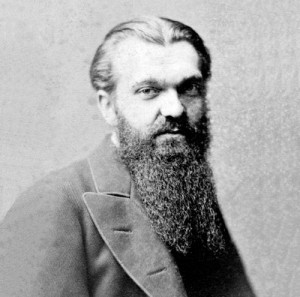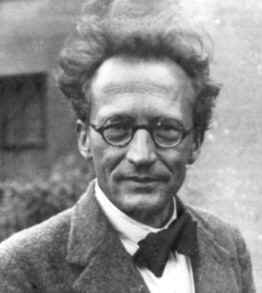Great Minds
Introduction
The following quotations from some of the greatest scientific minds of the last centuries may illustrate the spirit and scope of this website. These are all far-reaching and unusual analyses by the most eminent thinkers around and most quotes form the gateway to a seemingly forgotten approach in physics to space, matter and the quantum world, swamped as physics is by the prevailing nonsensical ‘probability paradigm’.
This still fragmentary, rather unusual approach will be taken to its most extreme consequences in these pages.
I hope these quotations will lead those steadfast visitors of my site, who don’t shy away from a bit of cutting edge science and philosophy, to the contexts these quotes are taken from.
*****
UPON REALISING THE THIRD LAW (Kepler, 1618)
“Nothing holds me back, I can give myself up to the sacred frenzy, I can have the insolence to make a full confession to mortal men that I have stolen the golden vessels of the Egyptians to make from them a tabernacle for my God far from the confines of the land of Egypt.”
“If you forgive me I shall rejoice, if you are angry I shall bear it; I am indeed throwing the die, and writing the book, either for my contemporaries or for posterity to read, it does not matter which: let the book await its readers for a hundred years; if God himself has waited six thousand years for his work to be seen.”
*****
THE SPACE THEORY OF MATTER (Clifford, 1870)
I hold in fact: 1) that small portions of space are, in fact, of a nature analogous to little hills on a surface which is on the average flat; namely the ordinary laws of geometry are not valid in them, 2) that this property of being curved or distorted is constantly passed on from one portion of space to another after the manner of the wave, 3) that this variation of the curvature of space (my italics) is what really happens in that phenomenon which we call the motion of matter, whether ponderable or ethereal, 4) that in the physical world nothing else takes place but this variation, subject (possibly) to the law of continuity.
*****
ON THE ETHER (Einstein, 1924)
Instead of speaking of an ether, one could equally well speak of physical qualities of space. Now one could take the position that all physical objects fall under this category, because in the final analysis in a theory of fields the ponderable matter, or the elementary particles that constitute this matter, also have to be considered as ‘fields’ of a particular kind or as particular ‘states’ of the space.
*****
ON GRAVITATION (Einstein, 1950)
Since the theory of general relativity implies the representation of physical reality by a continuous field, the concept of particles or material points cannot play a fundamental part, nor can the concept of motion. The particle can only appear as a limited region in space in which the field strength or the energy density are particularly high.
*****
WHAT IS LIFE? (Schroedinger, 1944)
One must give up entirely the idea of exchange of energy in well-defined quanta and replace it with the concept of resonance (my italics) between vibrational frequencies. Yet we have seen that because of the identity of mass and energy, we must consider the particles themselves as Planck’s energy quanta. This is at first frightening. For the substituted theory implies that we can no longer consider the individual particle as a well-defined permanent entity.
******
Comment
These quotations and concepts are the mode of thinking to which I feel most attracted and by which my own cosmology is mostly sustained and further inspired. I will work out this cosmology along the way at later dates, but glimpses of it emerge from what I have written already in ‘Cosmology’ and in the comments below.
I hope these quotes show that my ideas, although extreme, do not come out of the blue, but do resonate with the thinking and reasoning of the greatest minds on the subject:
In Kepler we find a scientist in ‘a sacred frenzy’ on discovering one of the major laws of Nature. We see here how this affects the person and how the bliss of the ‘divine revelation’ results in a mystical experience. Kepler was elated and felt in union with his God.
We see here how these formidable insights transform the genius into a mystic. I think this was the case with Clifford as well, but we certainly find the mystical bent in Einstein and Schroedinger, all men of great scientific genius.
Clifford was one of the first to mention curvature of space, as part of a mathematical analysis of space. He also mentions a space in which ‘the ordinary laws of geometry are not valid’ (this certainly applies to my model). Matter is seen as a ‘distortion’ which is constantly passed on from ‘one portion of space to another after the manner of a wave’. The model I propose comes very close to this idea, except that there are not only ‘Clifford hills’, but also holes, where the material form moves through the ‘space pixalls’ as a wave, in the manner of an image through the pixels of a screen, devoid of self-substance. (See ‘Cosmology’)
In 1924 we see that Einstein had abandoned the Machian Void (Ernst Mach) as the featureless quality of space, (which many scientists still don’t seem to have realized), Einstein had in a way returned to the good old ‘aether’, but he wanted it to be more specific and give it the properties of a field, besides that, he felt we also should see elementary particles in ‘the final analysis’ as ‘fields’, as ‘particular states of the space’. So obviously the earlier featureless Void became filled with ‘field’ and ‘physical qualities’, a kind of ‘aethereal’ substance, but the ‘aether’ had undergone a transformation and we should not talk of aether any longer, but of something like ‘the state of the space’; space as Void was no longer mentioned, but persists in the term Nothingness.
In 1950 Einstein stressed the continuous field as the basis of everything, probably to distinguish it from the discontinuity of quantum physics. He rejects the concept of material particles and even of motion. This comes close to what I propose as the motion of ‘matter’ through the ‘space-pixalls’ (‘space-particle’ which ‘picks all’ that passes) in 3 dimensions, much like images moving through the pixels of a television-screen in 2 dimensions. This is close to Clifford’s analysis, above (see ‘Cosmology’).
Finally there is Schroedinger who proposes the concept of resonance as the fundamental analysis; and who emphasizes, rather more disconcertingly, that in last analysis ‘we can no longer consider the individual particle as a well-defined permanent entity’. Schroedinger opposed the wave-particle duality and abhorred quantum indeterminacy, the so called ‘probability wave’ ( this went so far that he said he was sorry to have ever been part of the development of quantum physics); his was a theory of only waves, and of resonance.
Schroedinger was deeply influenced by Indian thought, especially Vedanta, and his book ‘What is Life’ had an significant impact in the more philosophically minded scientific circles of the time. I consider his analysis the best of all and it comes closest to what I propose.
This tunes perfectly with the movement of ‘distortions’ (to use Clifford’s term) as waves through resonating ‘space pixalls’, as I propose in my model of the ‘cosmic deep field’, the aggregate of geometrical ‘space grains’ or ‘space pixalls’, and it sustains my emphasis on resonance as a fundamental quality of space and its appearances.
The whole concept of any self-permanence or self-identity in the particle, or matter in general, is gone in this model. Suddenly matter is void, empty, has no longer any substance, it’s all waves, forms consisting of waves, with nothing solid or permanent around, nor any definable separations. Space itself becomes the substance out of which all phenomena arise. The concept of space as a volume vanishes when all materiality disappears; space appears as manifestation of the essence of the mind, when the separation between subject and object no longer holds, space as materialised eternity.
Space then is no more a ‘physical’ category, but the field of experience, of ‘permanent creation’, an essentially mental phenomenon. The experience of Now as the only basic reality.
‘Form is emptiness, emptiness is form’ (Buddha’s Heart Sutra).
*****
The Megalithic Age
The mystical experience and interaction with the divine through scientific endeavour are universal, so this will certainly have been part of the spirit of the scientific enterprises of the Stone Age world as well. The spirit of awe for Nature seems completely lost in present day science, whereas it was all pervading in the origins of science.
In my view Maeshowe, Brodgar, Stenness, Avebury and Stonehenge are among the monuments of mankind’s first grasping of the natural laws that rule Nature and which are expressions of the divine harmonies in reality. The megalith builders went to great length to preserve their knowledge for posterity, the same is true for the probably slightly later but also contemporary operating pyramid builders in Egypt, who expressed exactly the same mathematical knowledge, although in a more sophisticated way and with one more dimension.
The fact that both used the same unit of length is a case for ‘morphic resonance’, but could also be explained as the most logical, because mankind often invent the same things in different times, and probably both concerned the circumference of the earth. It was all about finding the human measure in Nature and by doing that becoming one with nature. The heart beat as the measure of time, the ulna, the ell, the fore arm, the foot, as measures of length and all mathematically tuned to the rhythm and dimensions of nature.
That may have been their divine inspiration to build these magnificent and daring works, the union with the cosmos, doorways to the Beyond.
I am painfully aware of the fact that I have great difficulty in presenting this highly abstract worldview, but, as with my approach to the mathematics, it is all based on rather simple straightforward logical reasoning, once we have set out the principles of our model. These principles are operating in the resonance between spherical and toroidal waves in the ‘cosmic deep field’, which explains the discreteness of the quantum appearance, expressed in the geometries of the sphere and the torus, the one symbolized by the circle, the other by the square….
We will see that my cosmology springs from this most basic of all geometries in a resonance of whole numbers, which pervades all of space and which I call the ‘cosmic deep field’, the substance of ‘Permanent Creation’, of which we are part ourselves.
*****



